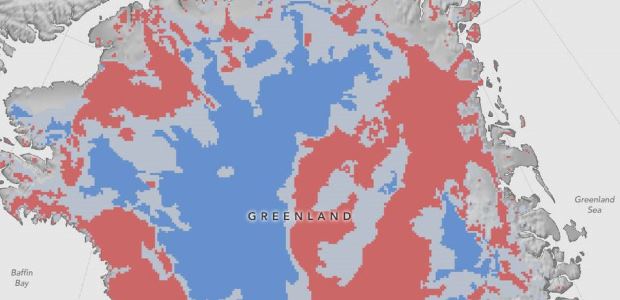
NASA Maps Thaw Areas Beneath Greenland Ice Sheet
The research team combined four different approaches to investigate the thermal state at the bottom of the ice sheet, including recent computer models of the ice sheet, radar data, and ice surface speed measured by satellites.
Researchers at NASA have created the first map showing which parts of the bottom of the Greenland Ice Sheet are thawed and which sections are believed to be frozen, shedding light on how the massive ice sheet will react to a warming climate, Maria-José Viñas of NASA's Earth Science News Team reported Aug. 3.
The NASA article explains that scientists have had few direct observations of thermal conditions under the ice sheet: No more that two dozen boreholes have reached the bottom. "We're ultimately interested in understanding how the ice sheet flows and how it will behave in the future,” said Joe MacGregor, lead author of the study published recently in the Journal of Geophysical Research – Earth Surface and a glaciologist at NASA's Goddard Space Flight Center in Greenbelt, Md. "If the ice at its bottom is at the melting point temperature, or thawed, then there could be enough liquid water there for the ice to flow faster and affect how quickly it responds to climate change."
It says the team combined four different approaches to investigate the thermal state at the bottom of the ice sheet, including recent computer models of the ice sheet, radar data, and ice surface speed measured by satellites.
In the article, MacGregor says the pap is only one step in fully assessing the thermal conditions. "I call this the piñata because it's a first assessment that is bound to get beat up by other groups as techniques improve or new data are introduced," he says, "but that still makes our effort essential because, prior to our study, we had little to pick on."